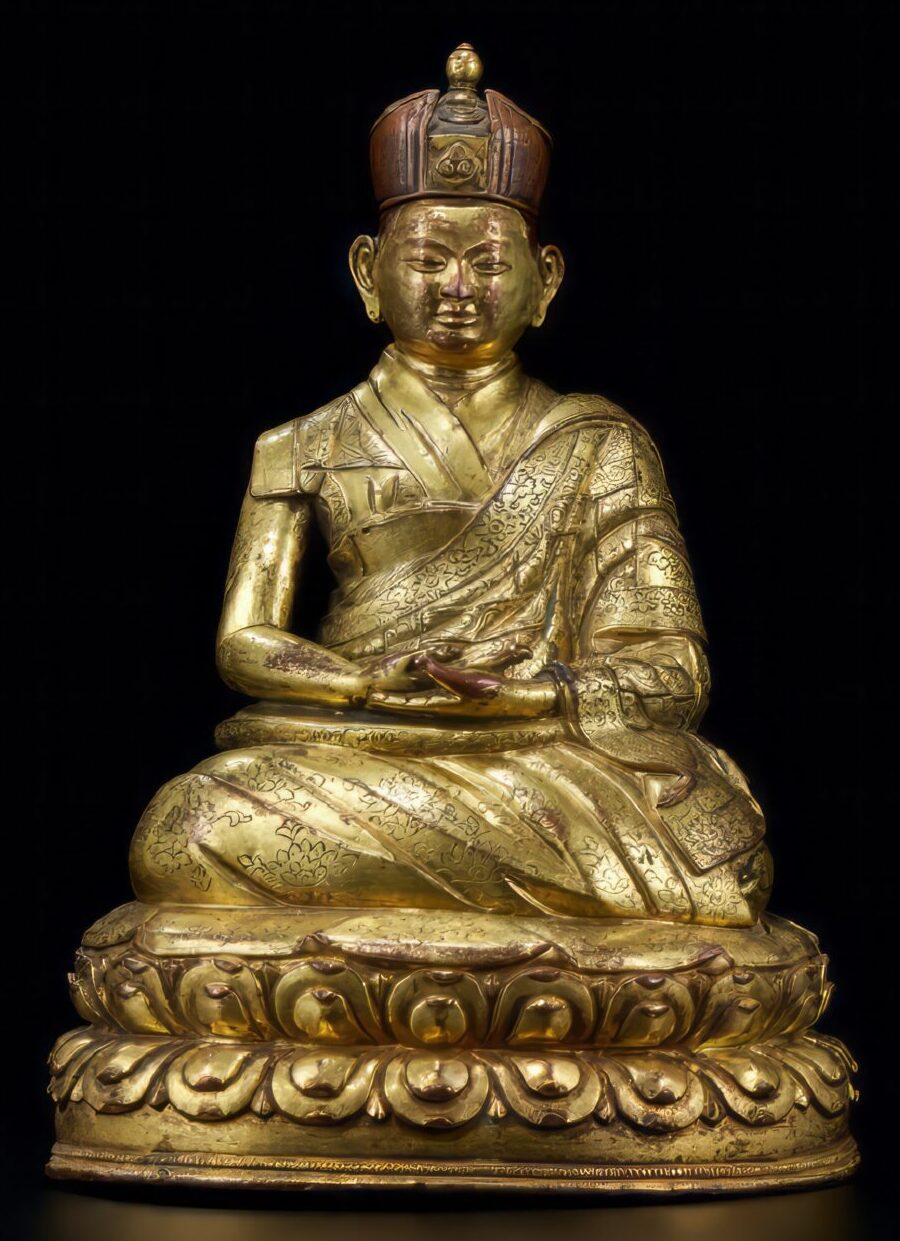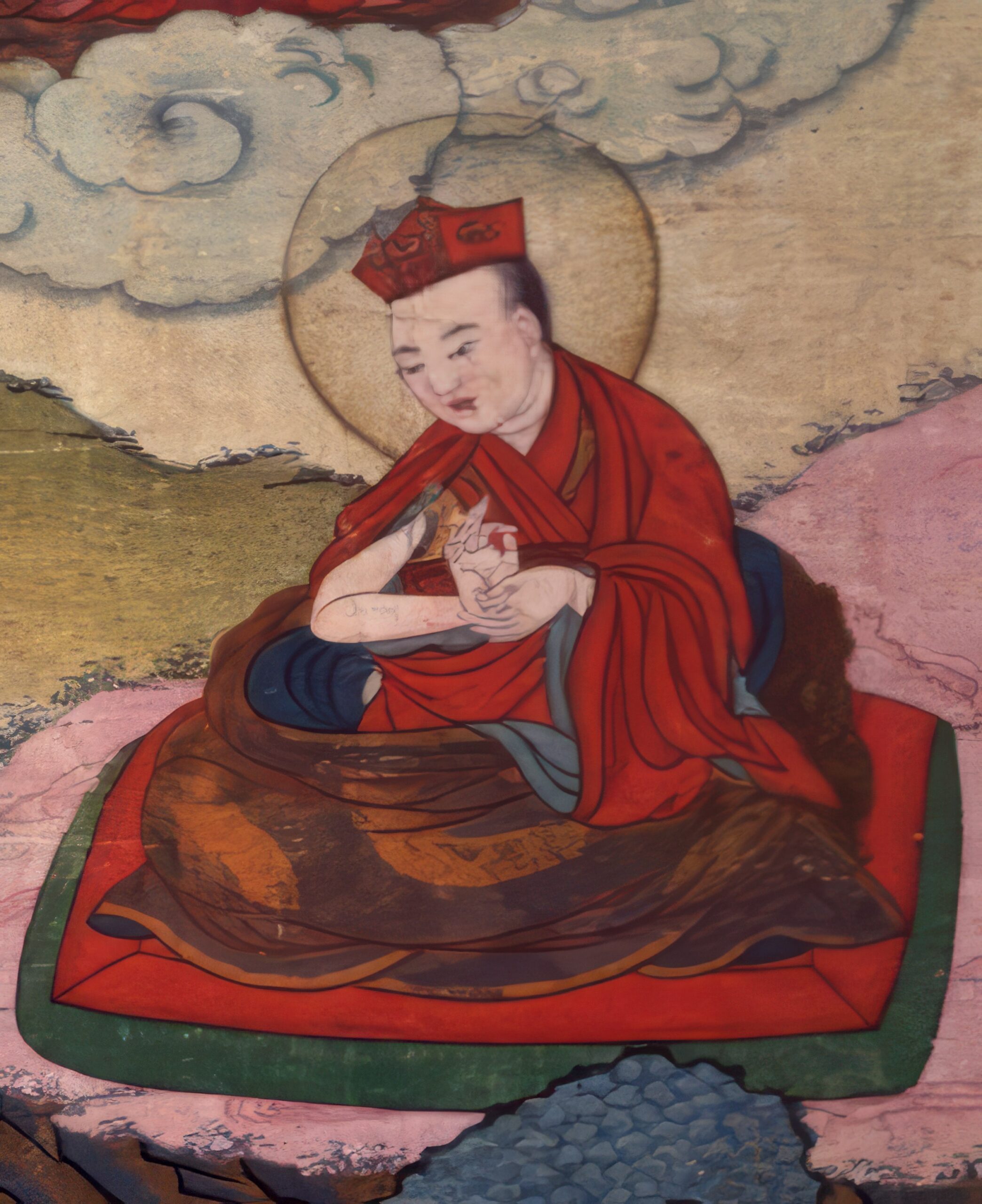 A maha-bodhisattva, at the exhaustion of all human failings, is Buddha. His latent purity of mind now blazes forth as radiating undiscriminative beneficent energy. Miraculously, all Samsara is in his blessing. Just such a maha-bodhisattva was Khedrup Drakpa Senge – the principal disciple of the 3rd Karmapa. It was in the prediction of the 2nd Karmapa – Karma Pakshi, that “future Karmapas shall manifest in two Nirmanakaya forms.” These miraculous human forms are not to be thought of as one, being distinct and separate in identity; neither are they to be considered as totally unrelated entities. For in absolute purity of mind, they may not be measured quantitatively. Not one; and not two either.
A maha-bodhisattva, at the exhaustion of all human failings, is Buddha. His latent purity of mind now blazes forth as radiating undiscriminative beneficent energy. Miraculously, all Samsara is in his blessing. Just such a maha-bodhisattva was Khedrup Drakpa Senge – the principal disciple of the 3rd Karmapa. It was in the prediction of the 2nd Karmapa – Karma Pakshi, that “future Karmapas shall manifest in two Nirmanakaya forms.” These miraculous human forms are not to be thought of as one, being distinct and separate in identity; neither are they to be considered as totally unrelated entities. For in absolute purity of mind, they may not be measured quantitatively. Not one; and not two either.
In absolute purity of mind, they display an unexhaustive capacity to give help to the floundering multitude in Samsara. And for those aspiring towards ultimate enlightenment, they are their shining inspiration.
The Karmapa presented Khedrup Drakpa Senge with a ruby-red crown – the exact replica of his own black crown. It was to be a symbol of their identicalness. For this exemplary disciple was in every respect his equal, being as unsurpassed in realization as he was in accomplishments.
The Karmapa’s own black crown is a replica of his mystical crown, a gift made of woven hair from the celestial Dakinis in adoration. The crown, an intangible mark of his spiritual perfection, hovers over him, invisible to all but those with exceptional purity of mind. With the red crown, the Karmapa also bestowed on him the name “The Shamarpa” The One With The Red Crown. As stated in the Good Kalpa Sutra: “in future, a maha-bodhisattva with a ruby-red crown shall come to the suffering multitude, leading them out of their cyclic bewilderment and misery.” In the Shamarpa, Sakyamuni Buddha’s prediction was fulfilled.
This Buddha, the Tathagata Ko-ncho Yenlak, in the form of a bodhisattva is also known in Tibet, as the Red Crown Karmapa.
 The first Shamarpa was a gifted child. Very early in life, it became apparent that he had a brilliant mind. What was much less apparent was that he had the gift of clairvoyance. He assimilated the Vajrayana teachings through a Dakini, whose presence was known to no one but him. Among all the transmissions given to him, it was the practices of Dorge Pamo (Vajra Varahi) that he had the greatest affinity to.
The first Shamarpa was a gifted child. Very early in life, it became apparent that he had a brilliant mind. What was much less apparent was that he had the gift of clairvoyance. He assimilated the Vajrayana teachings through a Dakini, whose presence was known to no one but him. Among all the transmissions given to him, it was the practices of Dorge Pamo (Vajra Varahi) that he had the greatest affinity to.
Apart from his own Guru, the 3rd Karmapa, he studied with no less than fifty great lamas, siddhas and translators of the time. And he became very well versed indeed in all aspects of Buddhism. The undisputed champion for Buddhism among unbelievers, he exercised his consummate skill in the art of debate to the fullest. In so doing, his understanding of the Buddhist teachings progressively deepened. With ever greater understanding of the teachings, his proficiency in dispelling doubts and misconceptions increased phenomenally. His works includes texts on both the tantras and the sutras, among which is the Commentary to the Prajnaparamita.
He spent his last years in retreat, as his Guru had foretold. For over twenty years, he meditated at Tsürphu, Nehnang, where he also taught all who left their worldly concerns behind to follow him, aspiring for ultimate enlightenment.
Through the practices of the Six Teachings of Naropa, he led the lost and the wandering from the Bardo state, into the Pure Lands of the Buddhas.